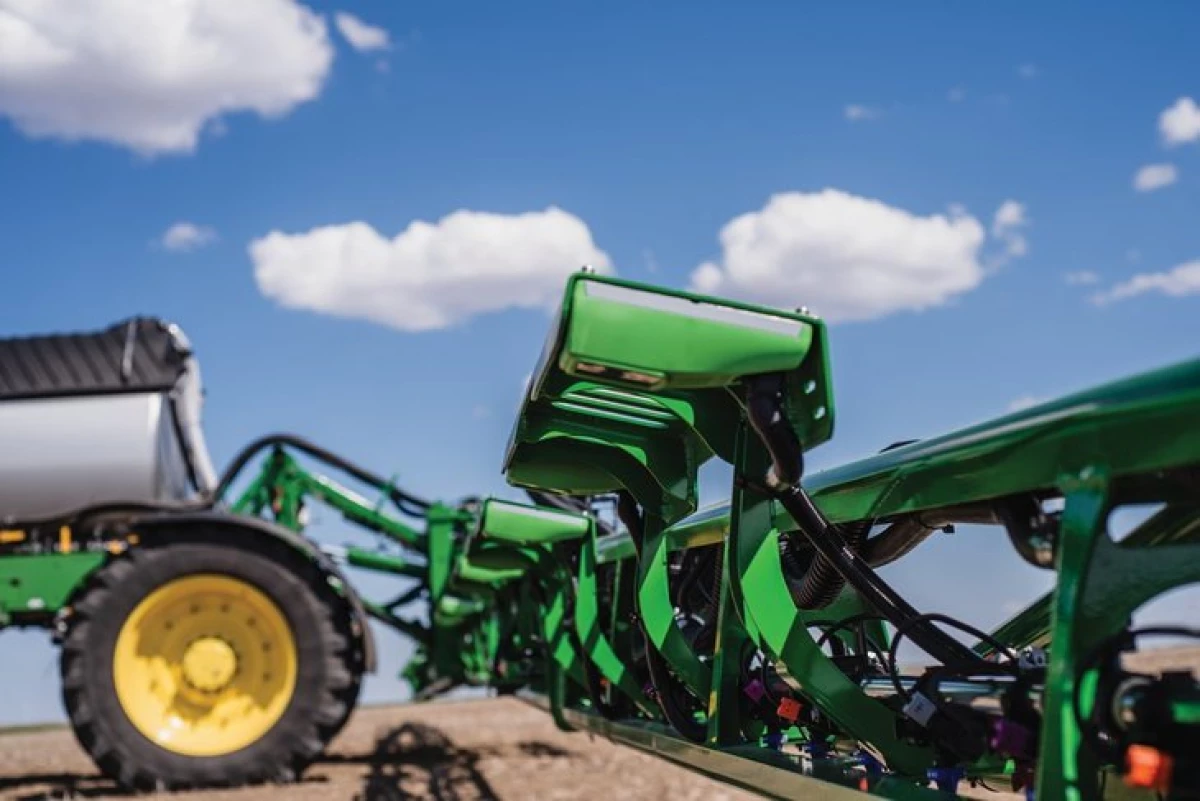
Weed-IT, declared as "the world-selling" technology of high-precision spray based on cameras, over the past couple of years has been demonstrated several times in Western Canada. "Now it has become available to Canadian farmers who want to optimize their spray operations," said Jebes Viorat, the Canadian equipment manager for processing agricultural land, the journalist of Canadian aggremptal Grainws Lee Hart.
Croplands, which bought the rights to sell Weed-IT technology, is a subsidiary of a well-known Australian company for protecting Nufarm plants.
The newest WEED-IT Quadro sensors installed on the field sprayer rod use blue light to scan the Earth to instantly determine and measure the level of chlorophyll in plants, and then apply herbicide only on these plants. The method is described as the technology "green on a brown" - that is, the instrument can detect weeds (any green plant with chlorophyll) and ignore the brown color, whether it is a mature culture, a lot of remnants or naked soil.
This technology that is not suitable for the usual introduction of herbicides in crops throughout the field is optimal in three cases. 1. With preseign burning of weeds at the beginning of the growing season. 2. To combat weeds after harvesting at the end of the season. 3. Closer to the end of the season for a point spraying with a desicant to help align the sections of immature crops, or to make herbicide to combat dangerous weeds.
The key feature of the technology is that it allows the field sprayer to apply herbicide only on green vegetable material, whether it is tiny shootings of annual sizes with a nail or whole section of the Coke in the ripening crop.
In the situation of burning spacers, depending on the weed populations, WEED-IT managed to reduce the use of herbicides to 90 percent.
Sensors can operate in three different modes. The first is the point of point spraying, at which nozzles are installed by 40 degrees, and each sensor scans the distance 25 cm. The second, or double mode, with nozzles installed on 60 degrees, can be configured so that it detects very small weeds size with nail And caused about 30 percent of the chemical on these minor weeds. When the system detects larger weeds, it gives them an additional dose of herbicide.
"The amount of herbicide used is regulated depending on the size of the weeds," says Woisis.
And the third mode - the full coating mode, with nozzles installed on 65, 80 or 110 degrees for sufficient overlap.
"It is very important that farmers have passed proper training to work with equipment and well-versed in the weeds with which they are fighting, and in the chemicals used," the consultant said.
In addition to different sensor modes, it is also possible to adjust the sensitivity of chlorophyll detection with blue light.
With high sensitivity, the light can detect and spray very small weeds, while at very low sensitivity the system detects only larger green plants and considers everything else that it scans as a background.
"For example, if you use the system before harvesting, it will detect these green areas in a harvest and ignore the rest," says WIPO.
"In the case of upgrading, WEED-IT sensors can be installed on most field spraying systems, although attention should be paid to what the weight can withstand the rod, and the work may take a week or more," he added.
The WURIR notes that over the past six years, Croplands sold about 14,000 sensors (for equipment about 600 field sprayers) in Australia and other countries, although the pleasure is not cheap.
The Weed-IT system costs about $ 1,500 for 30 cm rod, therefore, depending on the width of the rod, it is approximately $ 150,000. Nevertheless, the owners of technology are satisfied.
According to the consultant, an effective pre-sowing burning with WEED will not only reduce the amount of herbicide used, but also potentially reduce the pressure of weeds to the harvest, which will again lead to a reduction in the use of herbicides. He had one client from Alberta, processing about 4,000 acres, which reduced the number of trips to refuel the sprayer to 30wheat. "If every trip occupied 20 or 30 minutes, it saved 10-15 hours, which could be spent on anything else," said Wuis.
(Source: www.grainews.ca. Author: Lee Hart. Photo: Croplands Equipment).
